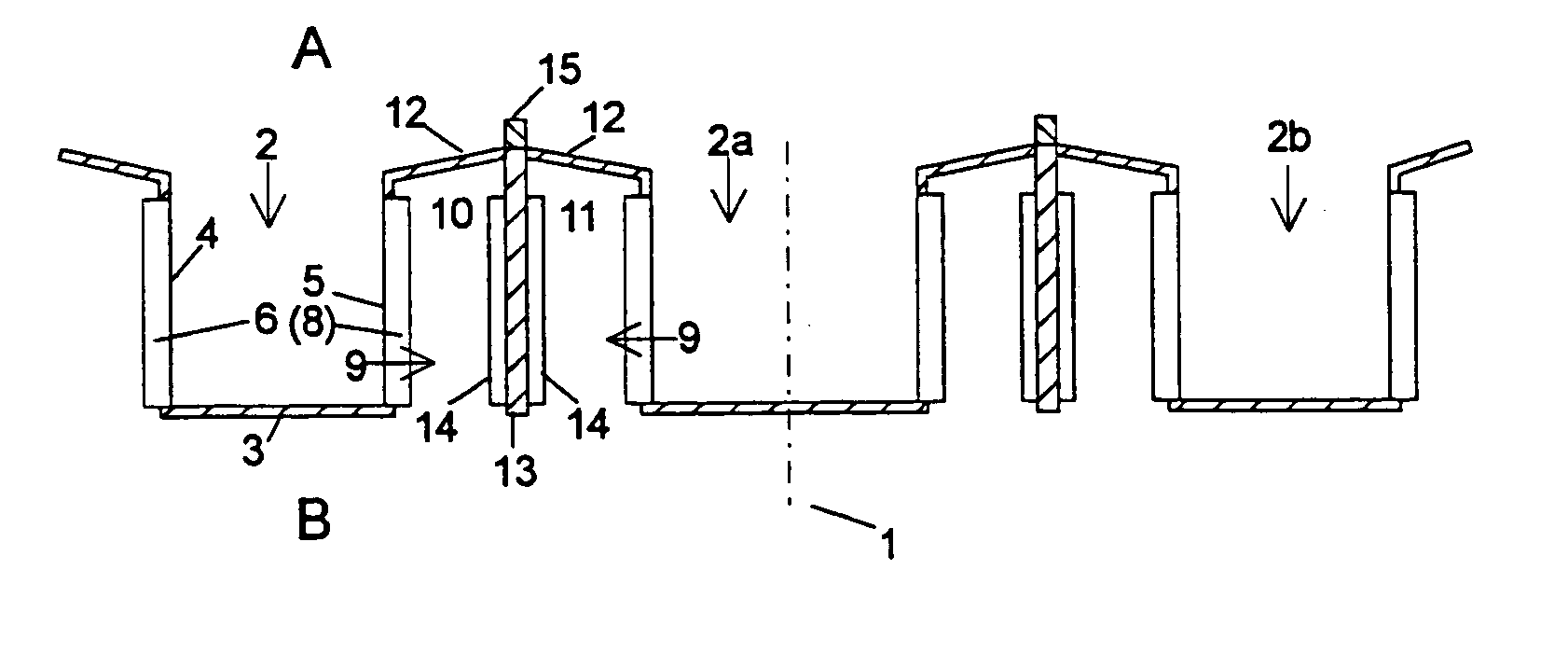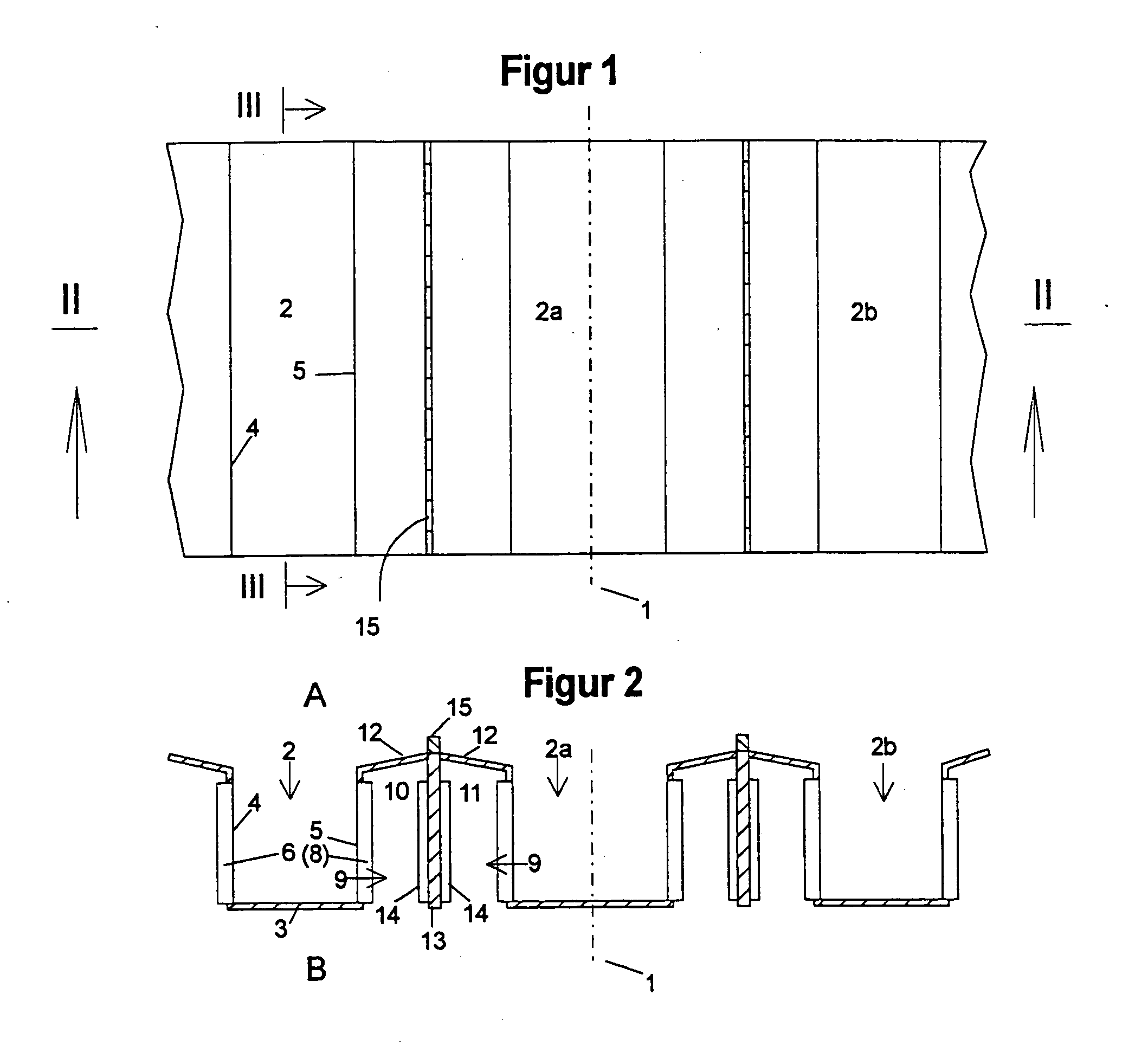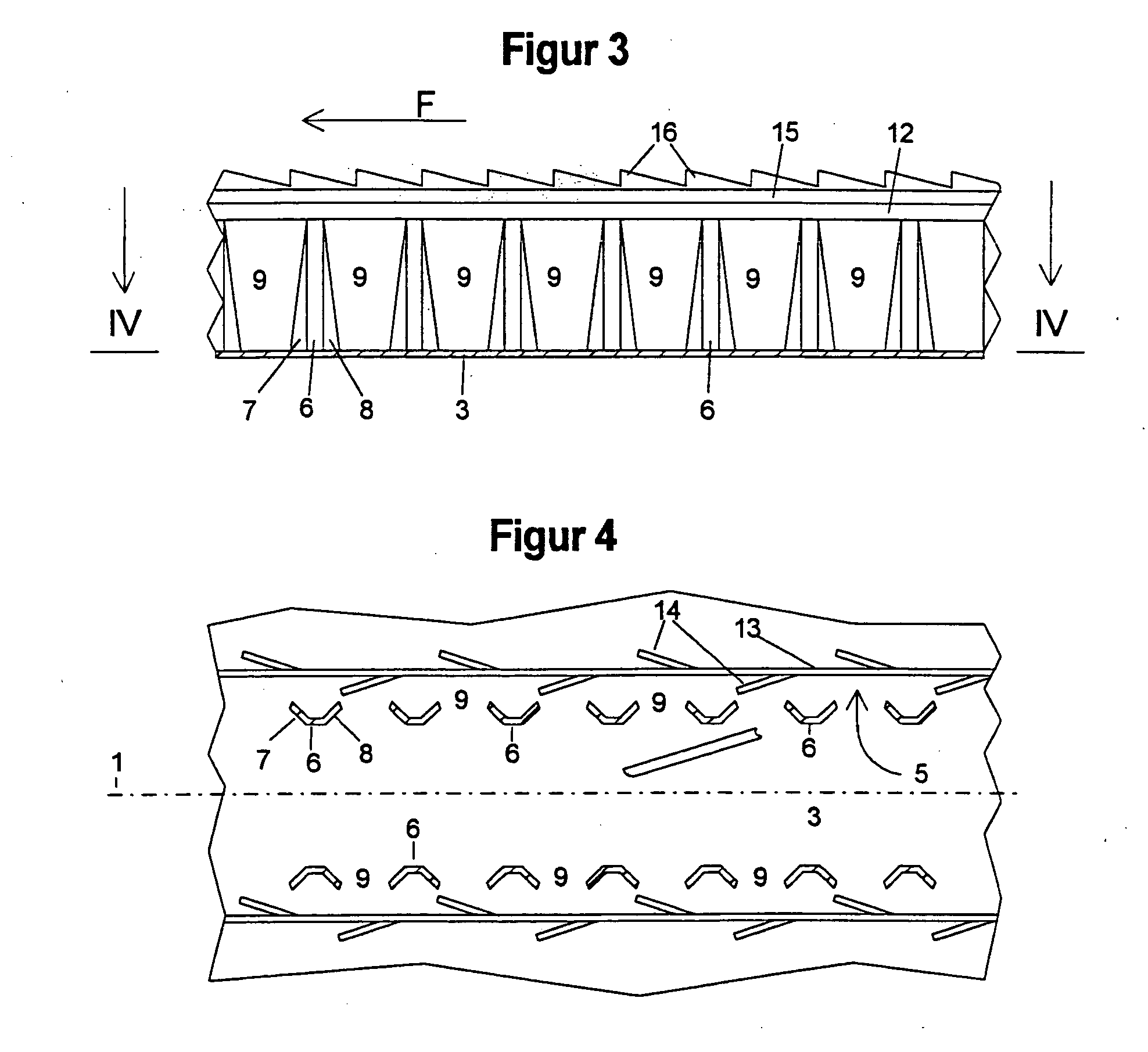Sieve
a technology of sieve and air guide channel, which is applied in the direction of sieving, solid separation, screening, etc., can solve the problems of not providing sufficient resistance, unable to disengage grains from stalks, and unable to provide sufficient resistance, so as to reduce foreign constituents of stalks and chaff. the effect of guiding the air in the air guide channel and improving the guiding
- Summary
- Abstract
- Description
- Claims
- Application Information
AI Technical Summary
Benefits of technology
Problems solved by technology
Method used
Image
Examples
Embodiment Construction
[0023] The following description of the preferred embodiment(s) is merely exemplary in nature and is in no way intended to limit the invention, its application, or uses.
[0024] FIGS. 1 to 4 show only portions of a sieve according to the invention.
[0025] Within a thresher, the sieve according to the invention, formed as a cleaning sieve, represents a sieve. The sieve is loaded by, a not represented, upper sieve or a conveying bottom of an agricultural harvesting machine with a harvesting goods mixture of grains, chaff and small stalk parts.
[0026] The sieve includes several channels 2, 2a, 2b extending parallel to each other and to a longitudinal axis 1. Only three channels are represented. As each channel corresponds design-wise essentially to the others, only one channel is described in more detail, namely channel 2 and the connection area towards channel 2a.
[0027] The channel 2 has a bottom 3, formed continuously smooth, and two flanks, a first flank 4 and a second flank 5, tran...
PUM
 Login to View More
Login to View More Abstract
Description
Claims
Application Information
 Login to View More
Login to View More - R&D
- Intellectual Property
- Life Sciences
- Materials
- Tech Scout
- Unparalleled Data Quality
- Higher Quality Content
- 60% Fewer Hallucinations
Browse by: Latest US Patents, China's latest patents, Technical Efficacy Thesaurus, Application Domain, Technology Topic, Popular Technical Reports.
© 2025 PatSnap. All rights reserved.Legal|Privacy policy|Modern Slavery Act Transparency Statement|Sitemap|About US| Contact US: help@patsnap.com



